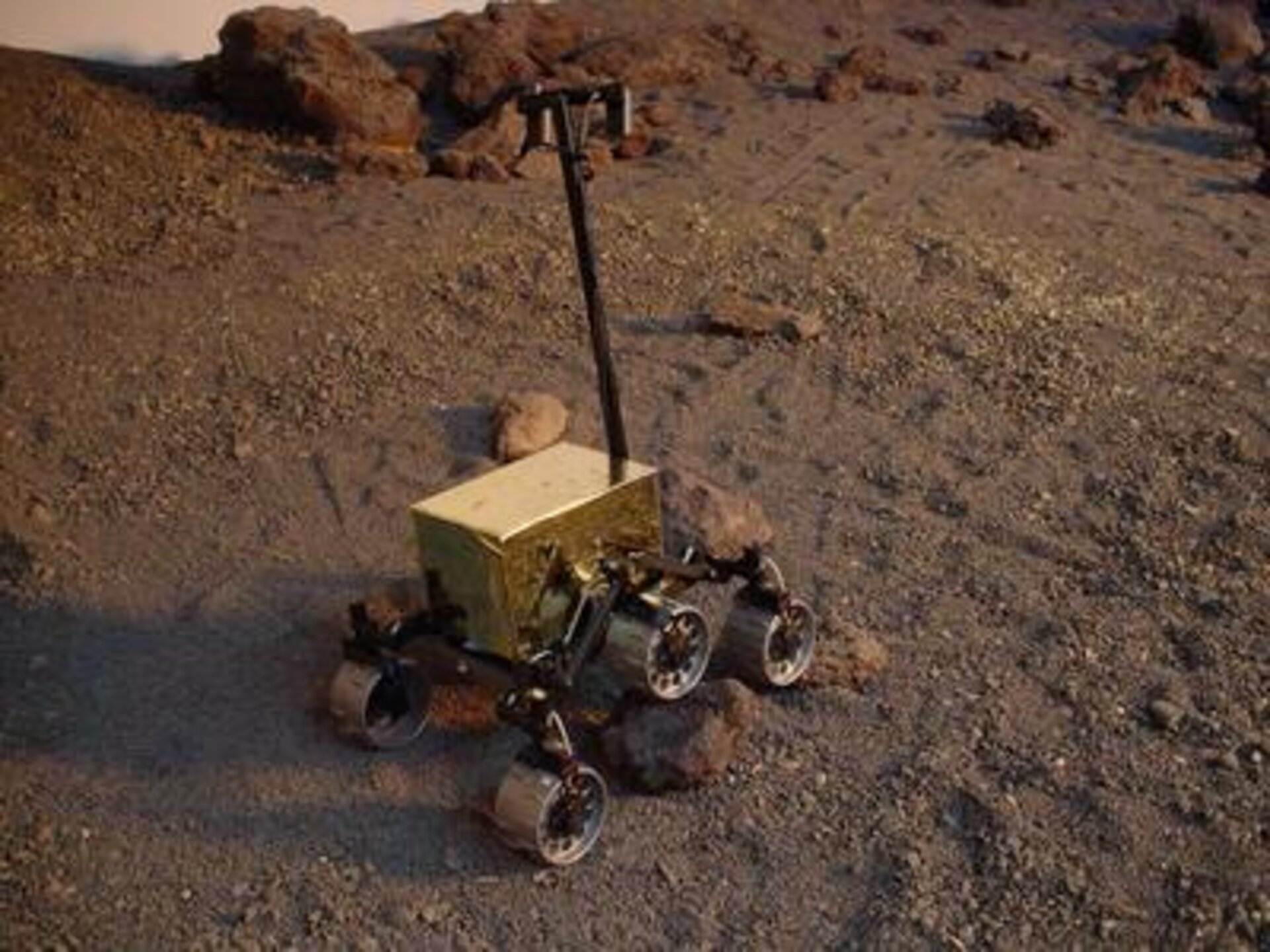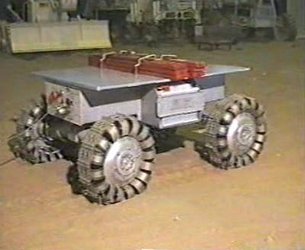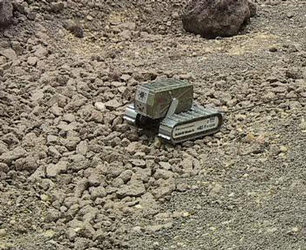EXOMADER
The EXOMArs DEmonstration Rover (EXOMADER) is a half scale model of one of the possible configurations of the EXOMARS rover. The EXOMADER-D features the so-called model-D chassis which exihibits extremely advanced cross-country ability.
The EXOMADER chassis was produced by Rover Company Ltd. on ESA contract, while avionics has been internally developed by the A&R Section. The EXOMADER is used:
- To evaluate/demonstrate the combined performance of the CNES navigation system with the cross country ability of the platform proposed for ExoMars mission;
- Expose the concept (autonomous rover with Computer Vision navigation) to the ESA space community.
The Exomader Locomotion Subsystem
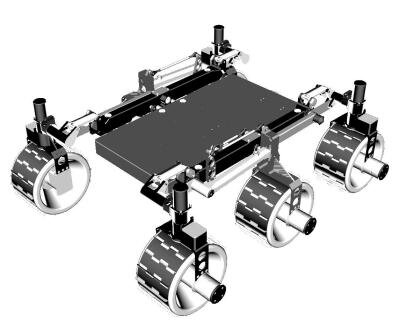
The locomotion subsystem is based on a chassis custom-built by Rover Company Ltd. (RCL) under ESA contract.
The chassis is the so-called Type-D as studied by RCL in the frame of the ESA Exploration programme.
The chassis has shown outstanding performance since the beginning. However some issues were clearly found in the implementation of the wheel grousers and the protruding motor blocks. The chassis underwent a first modification to improve the wheels. These have been modified to have triangular-shaped grousers and to remove the outboard protruding motor cylinder.
EXOMADER Characteristics
| Size | 0,652 x 0,575 x 0,255 m |
|---|---|
| Mass | 10 Kg |
| Payload Mass | 5 Kg |
| Wheels | 6 driving wheels; the outer 4 are also steering |
| Max. Speed | 0.1 m/sec (flat terrain, 5 Kg payload) |
| Max. Obstacle height | 15 cm |
| Max. climbing slope | 20 deg (hard cohesive soil / loose soil) |
Current Developments
The Automation and Robotics Section, through the dedicated work of many interns at the Automation and Robotics Laboratories, is continously implementing new Hardware and Software features on EXOMADER in order to improve its capabilities.
In particular, the following subsyatems have been installed on the chassis:
- control computer based on industrial PC-104 stack featuring:
- one CPU card
- one solid state disk for mass memory storage
- one FPGA card for low level drive control
- one WiFi card for remote communication
- energy storage system: 2 Li-ion batteries packs
- power stage: two custom-built power-drive boards with 16 H-bridges
- cameras: stereo rig with custom built pan-and-tilt unit
Locomotion and Navigation Control
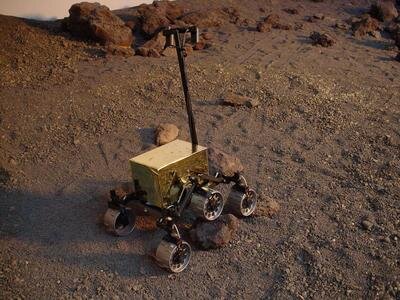
The EXOMADER control system, structured according the MORCA architecture, is implemented on a Linux-RTAI operating system.
The Navigation Layer is a modified version of the CNES rover navigation system.
The Trajectory and Low-Level Layers have been specifically developed.
REFERENCES
- Development of the Exomars Rover, M. Van Winnendael, P. Baglioni, J. Vago, 8th Advanced Space Technologies for Robotics and Automation" ASTRA workshops, Noordwijk, The Netherlands November 2-4, 2004
- Chassis Concepts for the ExoMars Rover, V. Kucherenko, A. Bogatchev, M. van Winnendael, 8th Advanced Space Technologies for Robotics and Automation" ASTRA workshops, Noordwijk, The Netherlands November 2-4, 2004
- Results of ESA/ESTEC and VNII Transmash/RCL joint activities aimed at planetary rovers development, M. Malenkov, V. Gromov, S. Matrossov, S. Vladykin, 8th Advanced Space Technologies for Robotics and Automation" ASTRA workshops, Noordwijk, The Netherlands November 2-4, 2004
- ExOS: The EXOMADER Operating System, G. Montano internal ESA working paper
- A Unified Control Architecture for Planetary Rovers, A. Martin Alvarez, W. de Peuter, P. Putz, 3rd international Symposium on Artificial Intelligence, Robotics and Automation for Space i-SAIRAS 94, Pasadena (CA), USA, October 1994
- Mars Rover Autonomous Navigation, M. Maurette, IEEE International Conference on Advanced Robotics, ICAR 2001, Budapest, Hungary, August 2001.


